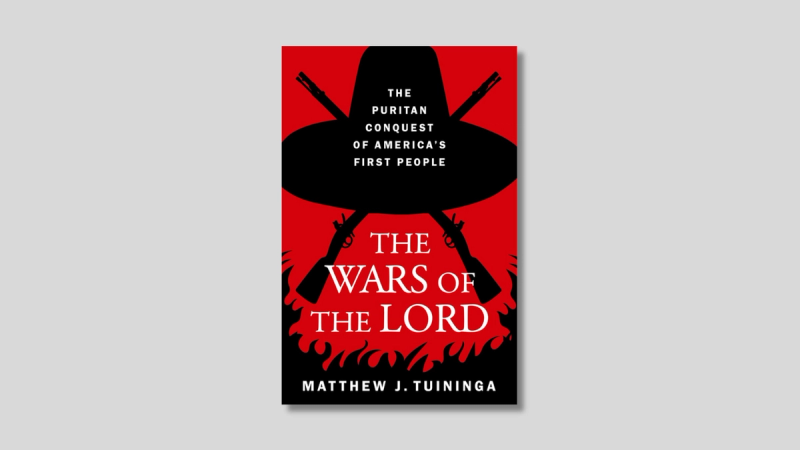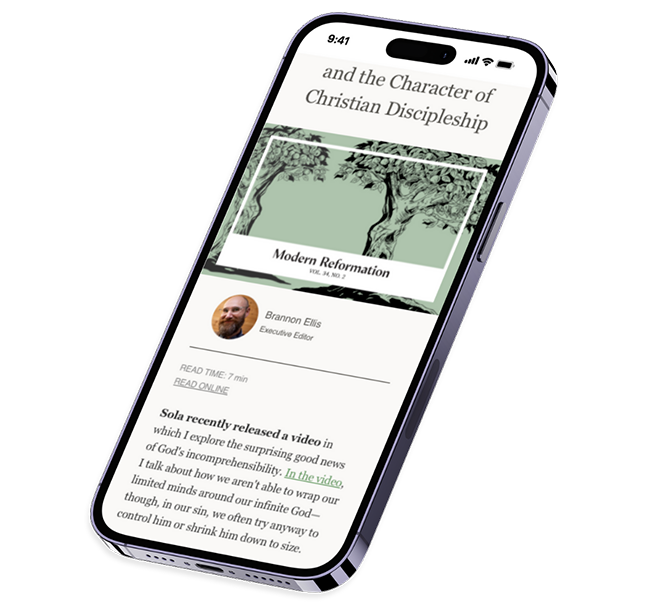The Wars of the Lord: The Puritan Conquest of America's First People
Matthew J. Tuininga
Oxford University Press | 2025 | 464 pages (hardcover) | $34.99
I started to read Matthew Tuininga’s The Wars of the Lord: The Puritan Conquest of America's First People with excitement. I found the subject intriguing, and I read through the first chapter quickly. Tuininga is an excellent writer and reading this book was like watching a movie. The story was gripping, the images vivid, and the characters relatable. “This is going to be a quick read,” I thought.
Then came the painful events—one after the other: sad accounts of miscommunication, misconceptions, unjust rulings, broken promises, and outright violence. By then, I was so emotionally invested in the story that I had to slow my pace to be able to digest every turn of events.
Despite the difficult subject, Tuininga managed to tell the facts without interjecting his views, which are only briefly expressed in the introduction and conclusion. This impartial recounting, free of agendas, allows readers to think for themselves, leaving them with powerful and lasting impressions.
The difficult relations between Europeans and Native Americans were not new to me. But I had never read such a detailed and precise account of the events of the pivotal time between the arrival of the Mayflower in 1620 and the end of King Philip’s War in 1676.
I had also never read such an impartial account. As Tuininga explains in the book’s introduction, “Earlier generations often thought of colonists as honest folk who fled tyranny in the old world to establish religious liberty and democracy in the new. ... More recently, it has become common to go to the opposite extreme, offering a narrative in which greedy and racist Europeans intentionally used Christianity as a tool to justify the enslavement and genocide of innocent Native Americans. ... The reality is more complicated and disturbing.” (4)
The uniqueness of Tuininga’s book lies in his commitment to be faithful to this disturbing complexity, acknowledging the ambiguity that is part of our Christian history, without losing his love and respect for Christ’s church. It provides a good model of how to be brutally honest about our past without assuming a superior stand and without presuming to understand all motives behind other people’s actions.
“Ultimately,” Tuininga tells us, “it is less important to judge the dead than to discern why they did what they did.” (6) This concern, in my view, is missing in both hagiographic accounts of the early Pilgrims and accusatory writings by modern historians. Judging separates while understanding unites in a shared humanity that is still struggling to do things right.
And, if it is true that “our noblest dreams and grandest projects are often inextricably intertwined with our darkest atrocities” (6), it is our responsibility as Christians to face this reality and learn from it—examining the weaknesses, prejudices, and misconceptions which may silently inform some of our actions.
Throughout the book, Tuininga helps us to recognize some of the problems that caused the initial Puritan vision of a godly and peaceful society to deteriorate into a seemingly unending conflict. For example, he shows how “the Puritan Colonies’ egregious treatment of the Narragansetts was rationalized by notions of justice but driven by fear, opportunism, and a desire for domination” (98). Indirectly, this evaluation teaches us to examine our own notions of justice.
Some Puritans were aware of their missteps or at least knew that something had to be corrected but, overall, most were convinced that “their methods were necessary and just and that they ultimately benefited those Native people who, by God’s grace, accepted Christianity” (374).
As painful as much of this book may be, there are many bright spots—for example, the efforts of John Elliot and other missionaries who started and maintained the so-called “praying towns” and the resilience of Native Christians who stayed faithful to the gospel regardless of the terrible example they saw.
Tuininga ends his book with a hopeful note: God has not stopped acting and the gospel is not impeded by human failings. “Many Narragansetts, Mohegans, and Pequots who had long resisted Christianity accepted it in the 1700s, during what might be called the long Indian Great Awakening,” Tuininga tells us. And while “many Indians rejected Christianity and still do ... for others, Christianity became the key ingredient that held their communities together and enabled them to preserve their culture. ... The resilience of these communities, despite everything that has happened to them, is nothing short of remarkable” (374).
Tuininga’s writing skills make this book accessible to all—as it should be, given the importance of the subject. At a time when the tendency to swing to one of two extremes of interpretation seems more marked than ever, this book will not only shed light on a complex time in American history but will hopefully set an example for other similar studies.






